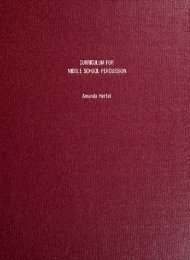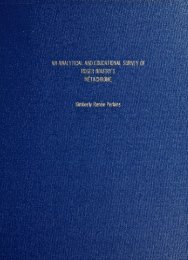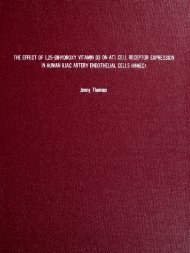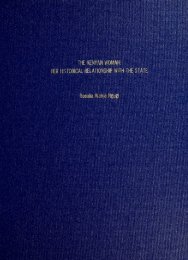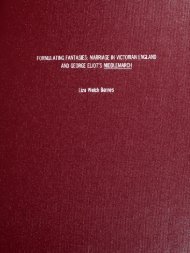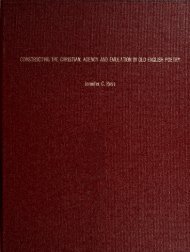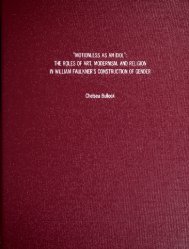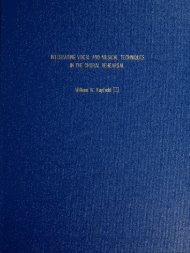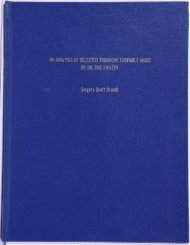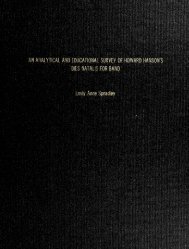The Effect of Aposematic Coloration on the Food Preference of ...
The Effect of Aposematic Coloration on the Food Preference of ...
The Effect of Aposematic Coloration on the Food Preference of ...
- No tags were found...
Create successful ePaper yourself
Turn your PDF publications into a flip-book with our unique Google optimized e-Paper software.
VI.<str<strong>on</strong>g>The</str<strong>on</strong>g> Study - Potential <str<strong>on</strong>g>Aposematic</str<strong>on</strong>g> <str<strong>on</strong>g>Colorati<strong>on</strong></str<strong>on</strong>g> Predator-Prey Interacti<strong>on</strong>This research focuses <strong>on</strong> ideas similar to those presented earlier: namely <strong>the</strong> avoidance <str<strong>on</strong>g>of</str<strong>on</strong>g>red and black color patterns by predators and <strong>the</strong> associati<strong>on</strong> <str<strong>on</strong>g>of</str<strong>on</strong>g> those patterns with potentialdanger.However, <strong>the</strong> present study deals with an interacti<strong>on</strong> that has not been evaluated: that is,<strong>the</strong> interacti<strong>on</strong> between Abrus precatorius and Aphelocoma coerulescens.Both species havecomparable distributi<strong>on</strong>s throughout Florida, making <strong>the</strong> likelihood <str<strong>on</strong>g>of</str<strong>on</strong>g> c<strong>on</strong>tact with each o<strong>the</strong>rplausible.<str<strong>on</strong>g>The</str<strong>on</strong>g> study examines <strong>the</strong> effect that red and black color patterns, similar to those <str<strong>on</strong>g>of</str<strong>on</strong>g> <strong>the</strong>aposematic jequirity beans, have <strong>on</strong> <strong>the</strong> food choice <str<strong>on</strong>g>of</str<strong>on</strong>g> scrub jays.Through <strong>the</strong> use <str<strong>on</strong>g>of</str<strong>on</strong>g>c<strong>on</strong>structed model seeds, itassesses <strong>the</strong> interacti<strong>on</strong> based <strong>on</strong> color al<strong>on</strong>e, with no o<strong>the</strong>rinterfering signals.This detail, combined with known informati<strong>on</strong> about aposematic colorsignals and <strong>the</strong>ir functi<strong>on</strong>s, makes itis possible to predict <strong>the</strong> resp<strong>on</strong>ses <str<strong>on</strong>g>of</str<strong>on</strong>g> Aphelocomacoerulescens and to interpret <strong>the</strong> significance <str<strong>on</strong>g>of</str<strong>on</strong>g> those resp<strong>on</strong>ses.If <strong>the</strong> birds avoid <strong>the</strong> red andblack patterned model seeds, itserves as an indicati<strong>on</strong> that <strong>the</strong> same aposematic color pattern inAbrus precatorius is a sufficient signal to warn predators not to attack.If, <strong>on</strong> <strong>the</strong> o<strong>the</strong>r hand, <strong>the</strong>birds do not discriminate against <strong>the</strong> red and black seeds, itsuggests that <strong>the</strong> color pattern doesnot aut<strong>on</strong>omously evoke avoidance, but depends <strong>on</strong> a combinati<strong>on</strong> <str<strong>on</strong>g>of</str<strong>on</strong>g> o<strong>the</strong>r signals.Thus, thisresearch is designed to determine if <strong>the</strong> colorati<strong>on</strong> <str<strong>on</strong>g>of</str<strong>on</strong>g> Abrus precatorius is aposematic.



